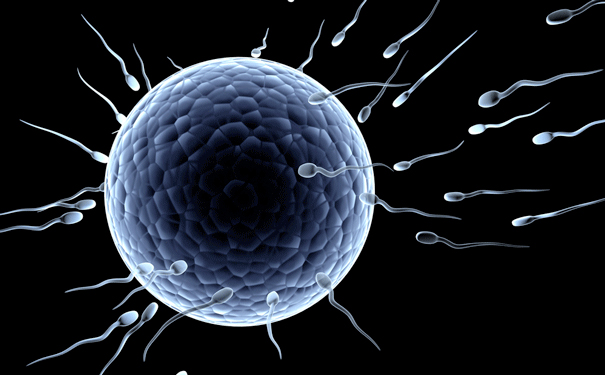Year 8 Cells And Organisation - Mr. Hung 2014

A quiz for cells & tissues.
- 1.
Which are the building blocks of us?
- A.
Tissues
- B.
Organs
- C.
Cells
- D.
Systems
Correct Answer
C. CellsExplanation
Level of Organisation
cells --> tissues --> Organs --> Systems --> OrganismRate this question:
-
- 2.
Which organelle is NOT found in animal cells?
- A.
Chloroplast
- B.
Cell membrane
- C.
Nucleus
- D.
Cytoplasm
Correct Answer
A. ChloroplastExplanation
A plant cell has extra structures: cell wall, large vacuole and chloroplastsRate this question:
-
- 3.
The image shows some ___________ cells.
- A.
Red blood cells
- B.
Nerve cells
- C.
Muscle cells
- D.
Cheek cells
Correct Answer
D. Cheek cellsExplanation
Red blood cell is red without a nucleus. Nerves cell is elongated with extensions, muscle cell is long and pointed at the ends.Rate this question:
-
- 4.
Chloroplasts can't be found in cells of
- A.
Leaves
- B.
Roots
- C.
Green stems
- D.
Flower buds
Correct Answer
B. RootsExplanation
Chloroplasts are organelles found in green parts of the plants. Chloroplasts actually consist of a green pigment called Chlorophyll that is important for the plant to make its own food by Photosynthesis. Roots are underground and they are not exposed to Sunlight.Rate this question:
-
- 5.
Which structure is responsible for controlling substances to come in or go out?
- A.
Nucleus
- B.
Cytoplasm
- C.
Cell membrane
- D.
Vacuole
Correct Answer
C. Cell membraneExplanation
The cell membrane is responsible for controlling substances to come in or go out of the cell. It acts as a barrier, allowing only certain substances to pass through while blocking others. This selective permeability ensures that the cell maintains its internal environment and regulates the movement of molecules and ions in and out of the cell.Rate this question:
-
- 6.
The following is a photomicrograph of young root. What can you see in these root cells?
- A.
Mitosis
- B.
Meiosis
- C.
Formation of pollens
- D.
Death of cells
Correct Answer
A. MitosisExplanation
The darker structures are chromosomes. There are various stages of cell division - mitosis.
Meiosis is a cell division for the formation of sex cells, eg. pollens and ovules in flowers or sperms and eggs in animals.Rate this question:
-
- 7.
The following shows the structures of a sperm. Why does this sperm have a lot of mitochondria?
- A.
To conserve water
- B.
To produce chemical for fertilisation
- C.
To produce energy for swimming
- D.
To prevent the tail from breaking
Correct Answer
C. To produce energy for swimmingExplanation
The sperm has a lot of mitochondria to produce energy for swimming. Mitochondria are the powerhouses of the cell and generate ATP, which is the main source of energy for cellular activities. Swimming requires a lot of energy, and the mitochondria in the sperm provide the necessary ATP for the tail to move rapidly and propel the sperm towards the egg.Rate this question:
-
- 8.
Which of the following is a tissue?
- A.
Heart
- B.
Digestive system
- C.
Skin
- D.
Muscle
Correct Answer
D. MuscleExplanation
There are 4 types of tissues: epithelial tissues, muscular tissues, nervous tissues and connective tissues,
Connective tissues include blood, ligaments and tendons. Skin is the largest organ in the body.Rate this question:
-
- 9.
The image shows a Paramecium. Which is not a correct description of this organism?
- A.
A protozoan
- B.
A unicellular organism
- C.
A specialised cell of a multicellular organism
- D.
An animal-like single celled organism
Correct Answer
C. A specialised cell of a multicellular organismExplanation
The image shows a Paramecium, which is a unicellular organism. It is not a specialised cell of a multicellular organism because it is a complete organism on its own. Paramecium belongs to the group of protozoa, which are animal-like single-celled organisms.Rate this question:
-
- 10.
Which structure is the Vacuole?
- A.
A
- B.
B
- C.
D
- D.
F
Correct Answer
A. AExplanation
The correct answer is A because the vacuole is a membrane-bound organelle found in the cells of plants and some protists. It is typically the largest organelle in the cell and is responsible for storing water, nutrients, and waste products. It helps maintain the cell's shape and turgor pressure, and also plays a role in regulating the cell's pH and ion balance.Rate this question:
-
Quiz Review Timeline +
Our quizzes are rigorously reviewed, monitored and continuously updated by our expert board to maintain accuracy, relevance, and timeliness.
-
Current Version
-
Mar 21, 2023Quiz Edited by
ProProfs Editorial Team -
Dec 31, 2013Quiz Created by
Edward Hung
 Back to top
Back to top







